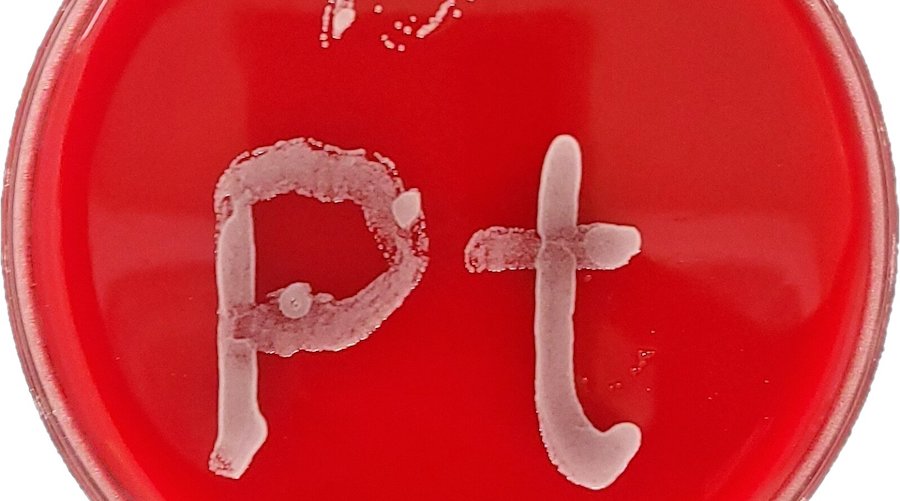Staff Writer | September 28, 2022

A Petri dish with red agar on which grows a fungal strand in the shape of the element symbol for platinum (Pt). (Image courtesy of the Community for Open Antimicrobial Drug Discovery).
Researchers at the University of Bern, the University of Queensland and other institutions demonstrated that 21 highly-active metal compounds containing cobalt, nickel, rhodium, palladium, silver, europium, iridium, platinum, molybdenum and gold can be used to treat fungal infections.

In a paper published in the journal JACS Au, the scientists explain that, globally, more than 1 billion people contract a fungal infection and that although they are harmless to most, over 1.5 million patients die each year as a result of such infections.
According to the group led by Angelo Frei, despite more and more fungal strains becoming resistant to one or more of the available drugs, the development of new drugs has come to a virtual standstill in recent years. This lack of interest is what inspired him and his colleagues to look into using metals to breathe new life into the search for treatments.
“The opinion that metals are fundamentally harmful to us is widespread. However, this is only partially true. The decisive factor is which metal is used and in which form,” Frei said in a media statement. “Many of the metal compounds [tested] demonstrated a good activity against all fungal strains and were up to 30,000 times more active against fungi than against human cells.”
The researcher said that out of the 21 compounds, the 11 most active ones were tested in a model organism, the larvae of the wax moth. Only one of the metal compounds showed signs of toxicity, while the others were well tolerated by the larvae. In a subsequent step, some metal compounds were tested in an infection model, and one compound effectively reduced the fungal infection in larvae.
“Our hope is that our work will improve the reputation of metals in medical applications and motivate other research groups to further explore this large but relatively unexplored field,” Frei said.
“If we exploit the full potential of the periodic table, we may be able to prevent a future where we don’t have any effective antibiotics and active agents to prevent and treat fungal infections.”
No comments:
Post a Comment